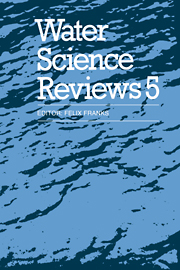The solvation of amino acids and small peptides
Published online by Cambridge University Press: 16 December 2009
Summary
Introduction
The naturally occurring amino acids exist in living organisms in both their free forms and in condensed forms as peptides and proteins. From a structural viewpoint there is a marked contrast in the range of types found for the free amino acids, of which some hundreds have been identified, and the rather limited, although still structurally diverse group of amino acid residues found in the peptides and proteins of higher living creatures. The diversity of structural types found in nature is further widened if lower organisms such as fungi and bacteria are considered and in such organisms peptides are found which have amino acid residues containing as examples, α,β unsaturated residues, cyclic structures of various types and unusual chiral centres. Almost all of the work of a physico-chemical nature which has been reported in the literature has, however, been directed towards studies on the 20 primary, protein amino acids (actually there are only 19 amino and 1 imino acid – proline). In some ways this is unfortunate because of the structural varieties which exist but given the propensity of most physical chemists to avoid synthesis or natural product isolation, is not too surprising. Consequently, however, most of the information presented and discussed here is directed towards the amino acids which are present in the proteins of higher organisms. For the convenience of the reader the names, structural formulae and abbreviations for these amino acids (and their residues in peptides and proteins) are given in Table 1.
- Type
- Chapter
- Information
- Water Science Reviews 5The Molecules of Life, pp. 137 - 186Publisher: Cambridge University PressPrint publication year: 1990
- 3
- Cited by

